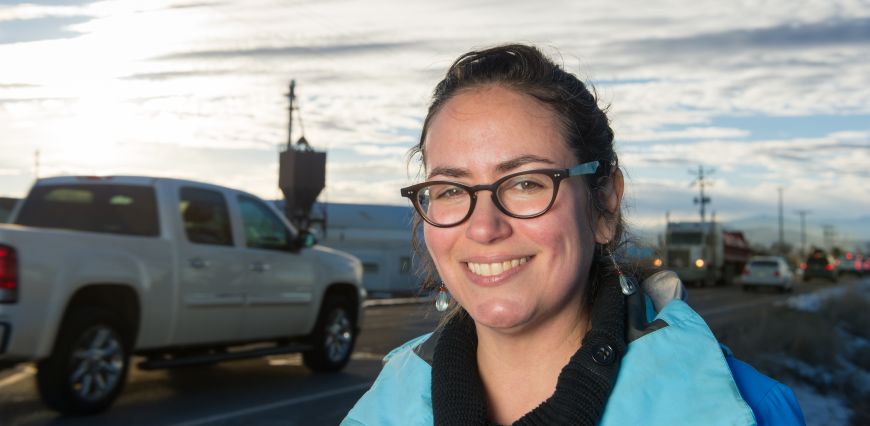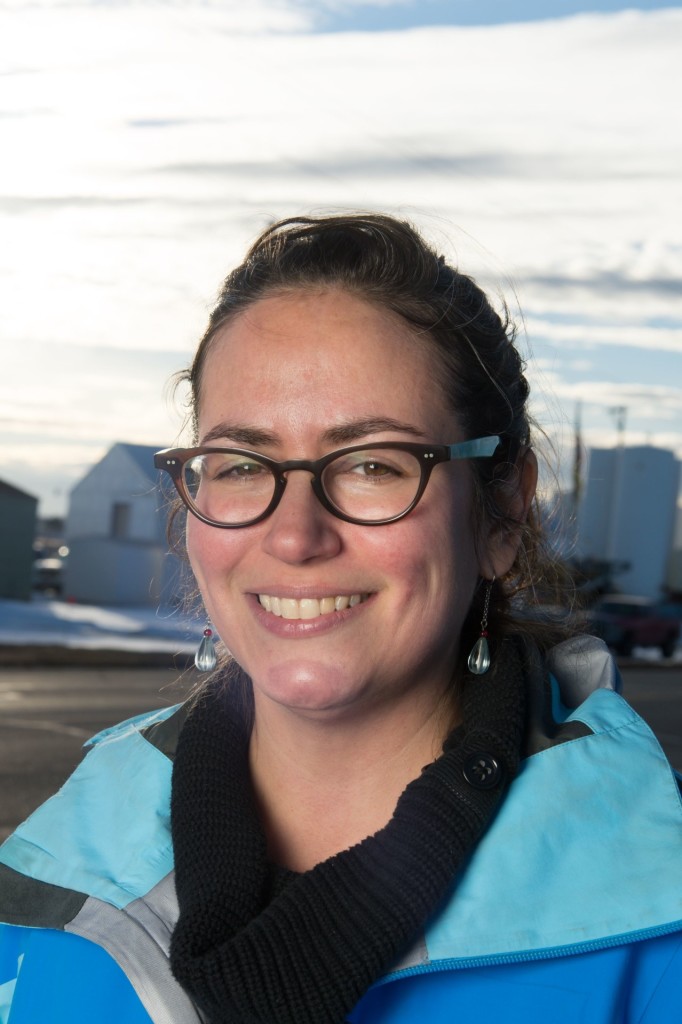
For respiratory researcher Sheryl Magzamen, asking big questions in epidemiology is as natural as breathing.
The assistant professor in CSU’s College of Veterinary Medicine and Biomedical Sciences enjoys looking at the big picture, as well as detailed data about the effects of air pollution and pesticides on lung health.
“I started long-distance running in high school. Running totally cleared my mind, because I was so focused on getting in my next breath. Usually, we just take breathing for granted, it’s something we don’t pay attention to until it doesn’t function properly,” Magzamen said. “It’s been something that has carried me since I started my research in 1998. There’s no shortage of good questions to ask.”
These days, Magzamen is investigating the combined influence of air pollution and pesticides on childhood asthma and the lung ailment known as chronic obstructive pulmonary disease – research that has attracted funding from the National Institutes of Health. On Jan. 30, she will receive the Zoetis Research Excellence Award from her college and will be the guest faculty speaker at its annual Research Day.
CVMBS Research Day
Dozens of students and other young investigators will present research findings when the College of Veterinary Medicine and Biomedical Sciences holds its 17th Annual CVMBS Research Day on Jan. 30 at the Hilton Fort Collins. The event starts at noon with a talk by epidemiologist Sheryl Magzamen, who will receive the Zoetis Research Excellence Award.
Undergrad class sparked career
The rising researcher was inspired to start her career path when she took a class about comparative health policy while pursuing a bachelor’s degree in biology from Cornell University.
“I started to understand how different countries plan their health-care systems, and it was fascinating. That was the first time I understood health from a macro viewpoint, where supporting health wasn’t necessarily about interacting with a patient, but planning a system that could influence an entire population,” she recalled.
Drawn to the idea of large-scale decision-making, she went on to earn a master’s degree in public health from Emory University. Magzamen worked for a time on tobacco-control policy in the political arena but discovered she prefers the rigors of science.
So back to school she went, this time earning a Ph.D. from the University of California, Berkeley, School of Public Health.
“Epidemiology has been such a good fit for me. It’s really about puzzles because most epidemiology tends to be observational in nature. We look at people as they live in their community – what are they exposed to, how they get sick, how they behave,” said Magzamen, who is based in the Department of Environmental and Radiological Health Sciences.
NIH grant supports complex thinking

In 2014, she won a $461,000 Career Development Award from the National Institutes of Health for a three-year project to study the effects of vehicle emissions and pesticide use on children with asthma in California’s San Joaquin Valley, where busy highways intersect with heavy commercial agricultural use.
The challenge in studying environmental mixtures like air pollution is, “How do we capture the whole environment?” Magzamen said. “In science, we tend to look at one factor at a time and try to capture the impact of that one exposure, but we know that doesn’t happen in real life.
“The idea is that if you have high levels of some kind of pesticide and high levels of diesel pollution, what is your risk of having decreased lung function compared to someone with high levels of diesel pollution but low levels of pesticide? Or, or high levels of pesticide but low levels of diesel? The more things we study, the more infinitely complex this gets.”
Magzamen often uses the phrase “infinitely complex,” yet the effort to understand complexities motivates her.
“The part I’m excited about is looking at these combinations and our analytic strategies to capture the total environment. So not just one exposure at a time, but multiple exposures – smoke, pesticides, wildfires, lead, arsenic in the soil,” she said.
Classroom, collaboration balance research load
Magzamen reconciles the infinite patience required for such longitudinal research with the more immediate rewards of interacting with students in her graduate-level class, Geographic Information Systems and Health.
“That’s one of the fun things about being here – the incremental approaches you take in research are balanced out by the immediate gratification of teaching. I couldn’t imagine just doing research and being patient enough to wait for the long term outcomes. Here, I also get to work with great students, and that’s a really nice balance.”
She credits CSU’s collaborative environment for support that led to the NIH grant, one of seven currently funded nationally for promising young researchers in the environmental health sciences.
One of her collaborators is Stephen Reynolds, director of the High Plains Intermountain Center for Agricultural Health and Safety. “Sheryl is good at building partnerships and she brings a new perspective from epidemiology,” Reynolds said. “She’s really creative, so it adds a spark.”